Maksis® presents the M-0 amplifier. It is a single ended EL84 / 6BQ5 / 7189 / 6П14П vacuum tube amplifier designed to work with the well known output transformer models:
- Tamura F-475
- Tango M-705
- Tango M-757
- Tango H-5S
- Tango U-608
- Hashimoto H-507S
- Sansui HS-5
- Lux SS5B
- James JS-6112HS
- UTC S-14
- Hammond 125ESE
The amplifier in the pictures uses Tamura F-475 output transformers installed with a corresponding Tamura A-395 choke. The aluminum top plate has been milled to use choke – output transformer combinations made by the above listed transformer manufacturers as well as the Hammond 193B choke. We use a Hammond power transformer and two ASC (American Shizuki Corporation) motor run polypropylene film in oil capacitors. We believe to be among the first users of the new Hammond walnut chassis. Generic electromechanical components installed include: RCA sockets, speaker binding posts, knobs, the fuse holder, IEC power socket, toggle power switch, terminal strips, bolts, washers and fasteners bought from a local shop, if we find better quality ones we will upgrade them.
The amplifier in the pictures uses Tamura F-475 output transformers installed with a corresponding Tamura A-395 choke. The aluminum top plate has been milled to use choke – output transformer combinations made by the above listed transformer manufacturers as well as the Hammond 193B choke. We use a Hammond power transformer and two ASC (American Shizuki Corporation) motor run polypropylene film in oil capacitors. We believe to be among the first users of the new Hammond walnut chassis. Generic electromechanical components installed include: RCA sockets, speaker binding posts, knobs, the fuse holder, IEC power socket, toggle power switch, terminal strips, bolts, washers and fasteners bought from a local shop, if we find better quality ones we will upgrade them.
Several resistor types were tested from the cheapest available carbon type to tantalum. The cathode capacitors tried were SCR in parallel with Suntan electrolytic capacitors. Similarly, the driver tube power supply RC filter is made of no-name cemented wire wound resistors and SCR capacitors; with Topcon electrolytics in parallel. There is no special reason for using the Suntan and Topcon brands, simply they were available locally. The Suntan were sold as low ESR (Equivalent Series Resistance) and Topcon were sold as general purpose 400V electrolytic capacitors. The potentiometers are Alps Blue Velvet. The schematics of the revision 0 is yet to be drawn into a CAD system, but the above description pretty much covers the circuit which is a classical open loop. Once we release the revision 0 schematics we shall list the exact components used.
The flexible use of different transformer and tube combinations is the main claim of originality of our M-0 amplifier. This originality has been achieved by the creation of a really well thought out aluminium top plate. Also, not often seen is the use of 6Н6П (6N6P) tube as an SRPP driver for output power tubes. We are yet to compare them to the 6Н30П-ДР (6N30P-DR), supposedly a great improvement. Soon we will try both Telefunken and Philips ECC82 and ECC88 drivers. Since we have no prejudice we are willing to try ultra linear and negative feedback employing the SG tap and NFB winding of the Tamura F-475 respectively. In that case we shall test with higher gain driver tubes such as ECC83 and EF86. Other ideas we have is to use one half of the 6Н6П (6N6P) as the driver and the other half as the output tube …
Tube rolling that we did so far includes the replacement of the 6П14П (6P14P) with Philips Miniwatt EL84 and the replacement of the rectifier 5Ц3М (5C3M) with 1950’s Sylvania 5U4G. The improvement was small but evident. One way to describe it is that a degree of pleasantness was introduced. An auditor said that the sound is more “mature”.
The design of the top plate took about 3 months with more than 20 variants drawn and considered. Above is the picture of one of the variants we looked into but rejected it for an improved one. Our final original top plate design makes a compact, visually elegant, thermally, electrically and mechanically robust amplifier.
As for the hum, even when placing one’s ear on the Fostex FE-167E whizzer one is not sure whether there is hum… The level of the hum is negligible and comparable with the ambient noise of a quiet suburban home. To achieve that we used star ground – star supply with single point grounding of the aluminium plate.
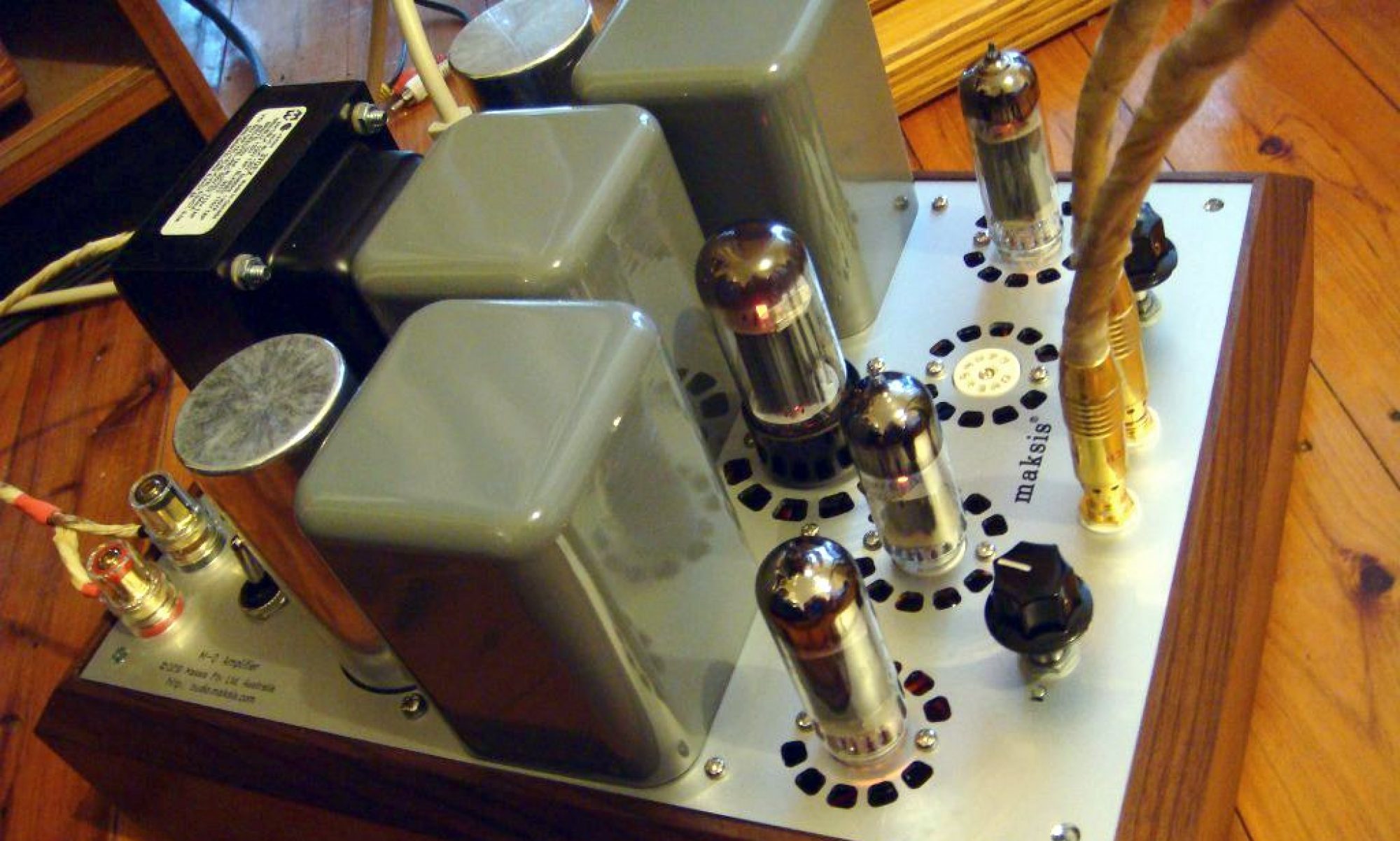
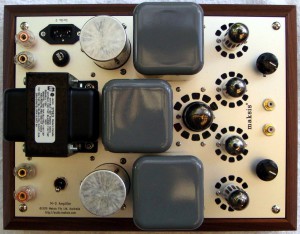
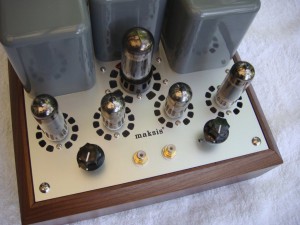

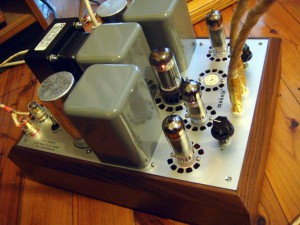
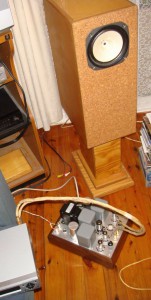
Very nice! I really like the EL84/6BQ5 family of pentodes and I think they can sound truly excellent run single ended. With a proper power supply and some quality output iron (as you’ve done), the humble EL84 can run with the big boys!